Introduction to Gmail
Gmail, a free email service developed by Google, has become one of the most widely used email platforms in the world. Launched in 2004, Gmail quickly gained popularity due to its user-friendly interface, robust features, and seamless integration with other Google services.
Brief History and Overview
Gmail was introduced to the public on April 1, 2004, initially available by invitation only. Its 1 GB of storage per user was groundbreaking at the time, offering significantly more space than competitors. Over the years, Gmail has evolved, introducing new features such as spam filtering, smart replies, and powerful search capabilities. Today, Gmail boasts over 1.5 billion active users globally, making it a dominant force in the email market.
Importance and Usage Statistics
The importance of Gmail in both personal and professional settings cannot be overstated. It offers a reliable and secure platform for communication, essential for everyday tasks such as sending messages, scheduling meetings, and managing contacts. According to recent statistics, Gmail handles over 300 billion emails daily, highlighting its critical role in modern communication.
Gmail’s integration with other Google services like Google Drive, Google Calendar, and Google Meet further enhances its utility, making it a central hub for productivity and collaboration. Its features cater to a wide range of users, from individuals managing personal emails to businesses relying on its robust infrastructure for professional communication.
In conclusion, Gmail’s combination of innovative features, extensive storage, and seamless integration with other Google services has cemented its place as a leading email service provider. Whether for personal or professional use, Gmail continues to set the standard for email services worldwide.
Would you like to proceed to the next section or make any adjustments to this content?
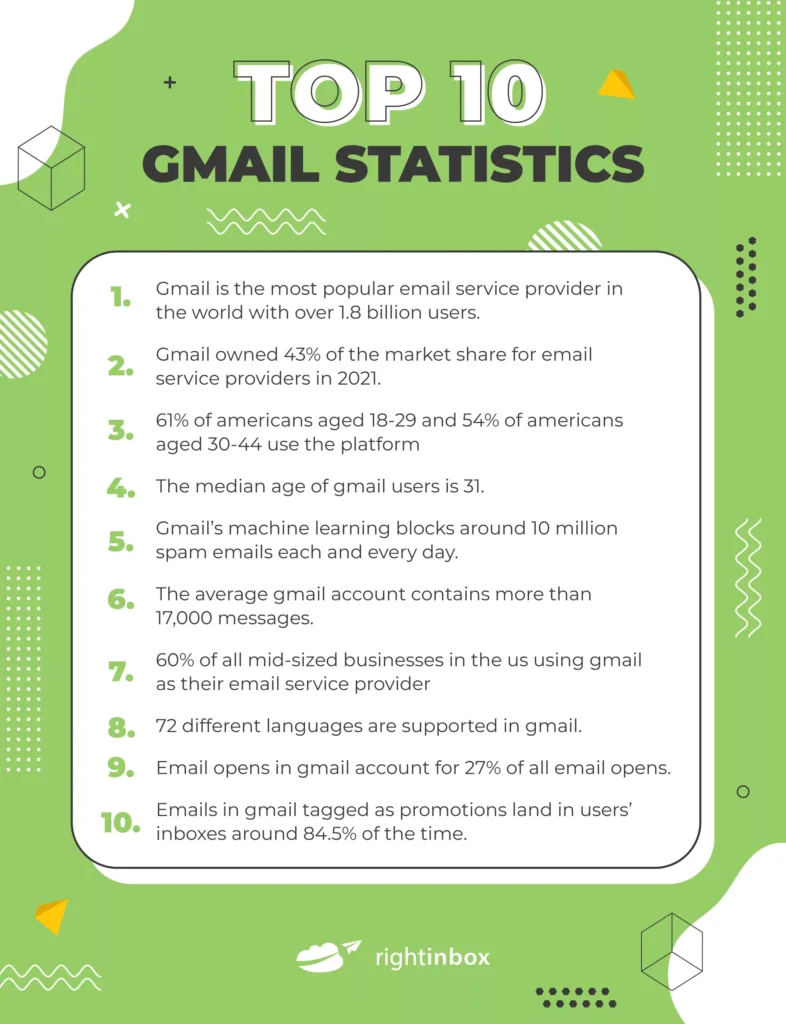
Account Setup and Security
Setting up a Gmail account and ensuring it is secure is crucial for safeguarding your personal information and enhancing your email experience. Here’s a step-by-step guide to creating a Gmail account and some essential security tips to keep your account safe.
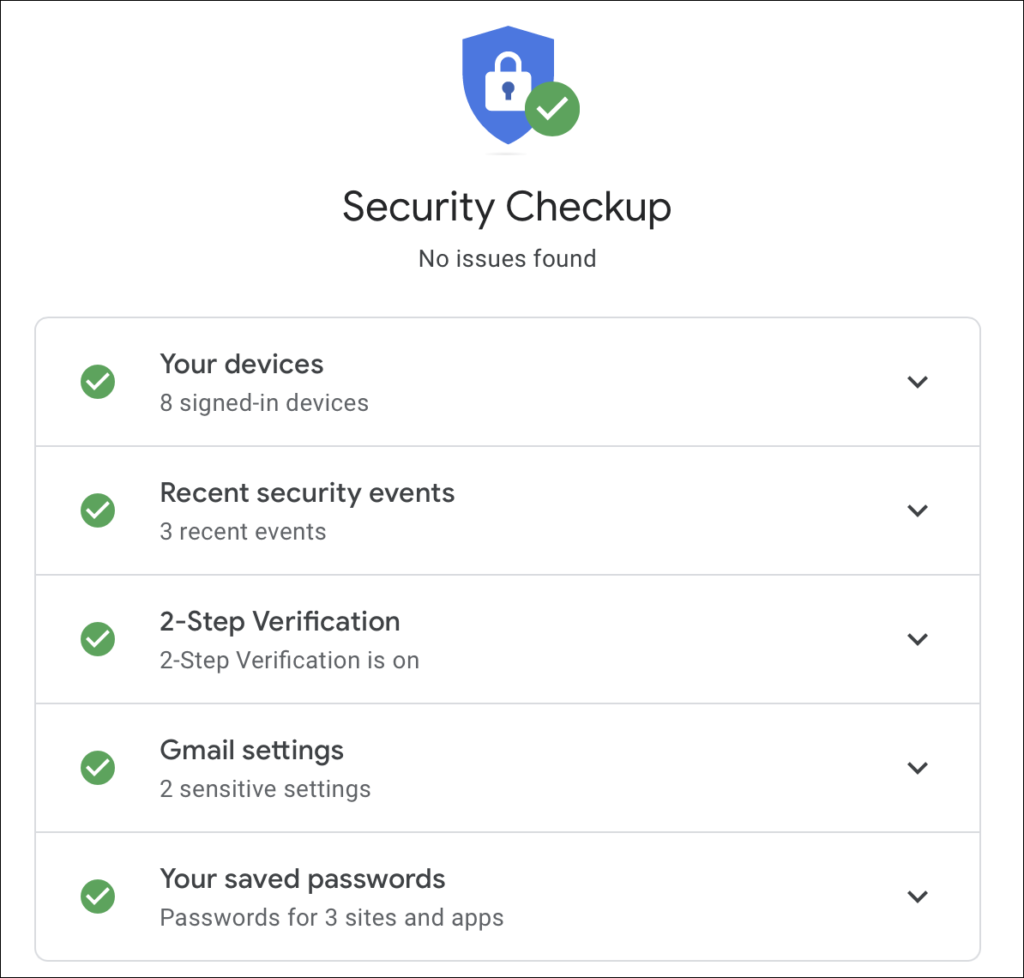
Step-by-Step Guide to Creating a Gmail Account
Visit the Gmail Website: Go to Gmail’s sign-up page.
Fill Out the Registration Form: Enter your first and last name, choose a unique username, and create a strong password. Make sure your password is a mix of letters, numbers, and special characters for added security.
Verify Your Account: You will need to provide a phone number for verification. Google will send a verification code to this number, which you must enter to proceed.
Complete the Profile Information: Add a recovery email address, your date of birth, and gender. This information helps in account recovery and security.
Agree to the Terms of Service: Read and accept Google’s terms and conditions to finalize the account creation process.
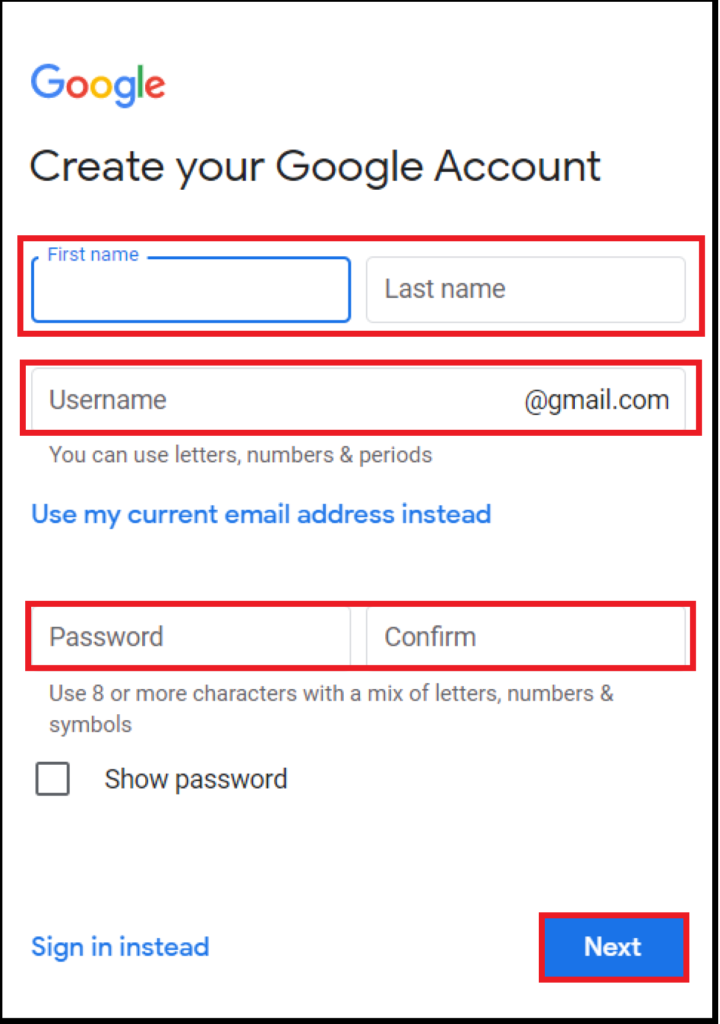
Two-Factor Authentication and Security Tips
Two-Factor Authentication (2FA):
Two-factor authentication adds an extra layer of security to your Gmail account. Here’s how to set it up:
Go to Security Settings: Log in to your Gmail account, click on your profile picture, and select “Manage your Google Account.”
Navigate to Security: In the left-hand menu, select “Security.”
Set Up 2-Step Verification: Under the “Signing in to Google” section, click on “2-Step Verification” and follow the prompts to set it up. You can choose to receive codes via text message or use an authenticator app.

Security Tips:
Regularly update your password. Change your password periodically and avoid using the same password across multiple sites.
Enable security alerts. Turn on notifications for any suspicious activity related to your account.
Review account activity. Regularly check the “Recent security activity” and “Devices” sections in your account settings to monitor for any unauthorized access.
Be cautious with third-party apps. Only grant access to trusted third-party apps and services. Review and manage permissions regularly.
Secure your devices. Ensure that the devices you use to access Gmail are secure. Use antivirus software and keep your operating system up to date.
Account Recovery Options
Setting up account recovery options is essential in case you forget your password or lose access to your account.
Recovery Email Address: Add a recovery email address during the account setup process. You can update it anytime in your account settings.
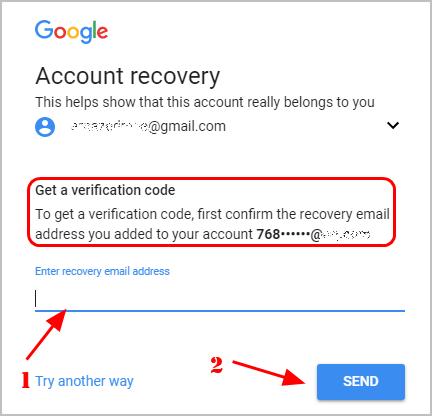
Recovery Phone Number: Provide a phone number that Google can use to send recovery codes if needed.
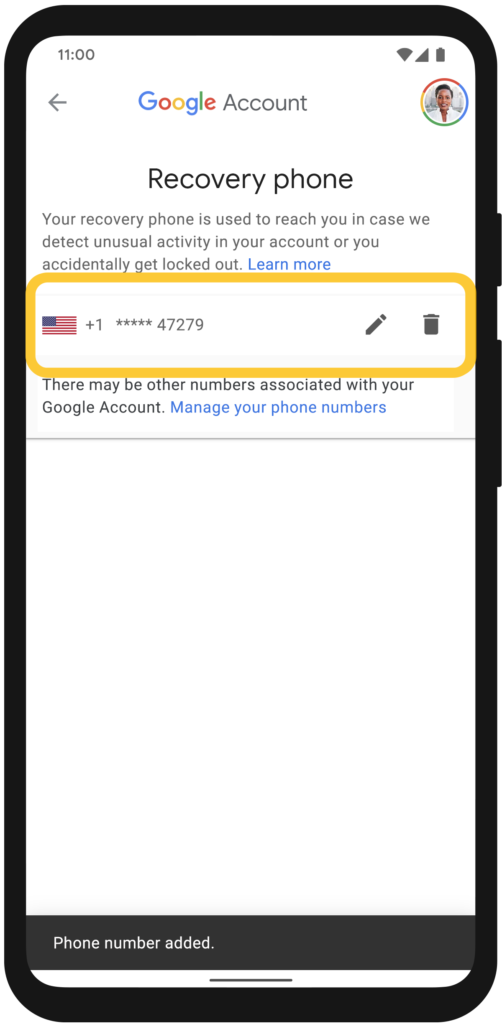
Security Questions: Google no longer uses security questions for account recovery, but make sure your recovery email and phone number are always current.
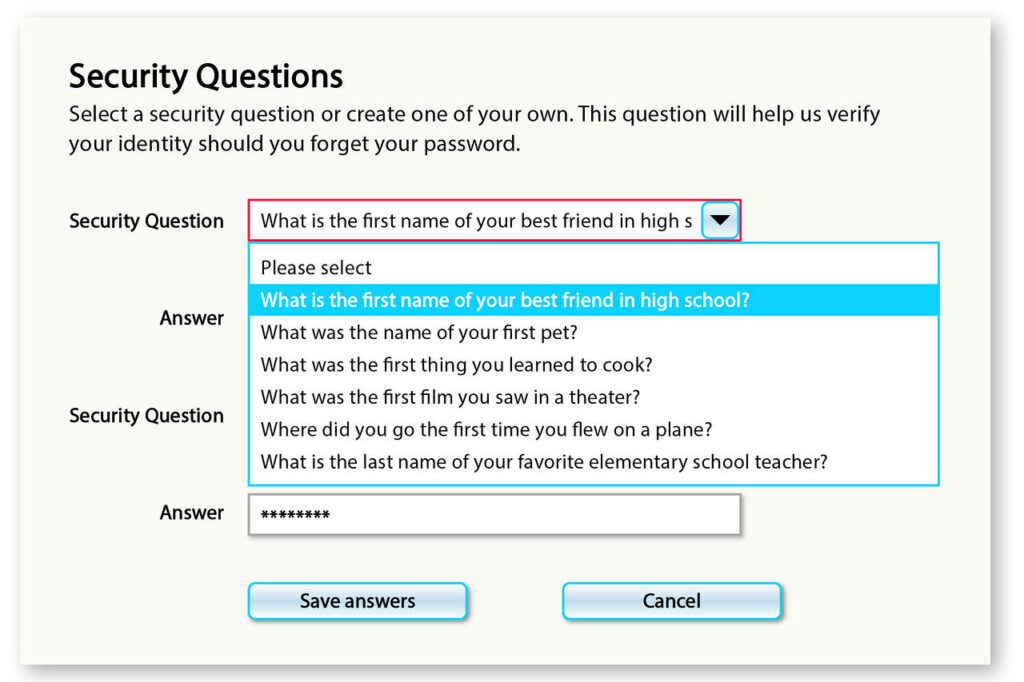
By following these steps and tips, you can create a secure Gmail account and protect your personal information effectively. Maintaining strong security practices ensures your Gmail experience is safe and reliable.
User Interface and Features
Gmail’s user interface is designed to be intuitive and user-friendly, making it accessible for both new and experienced users. Here’s a detailed look at what makes the Gmail interface stand out:
Overview of the Gmail Interface
When you first log into Gmail, you’re greeted with a clean and organized layout. The interface is divided into several sections:
Inbox: The central area where all your incoming emails are displayed.
Sidebar: Located on the left, it includes folders like Inbox, Sent, Drafts, Spam, and Trash, along with custom labels you can create.
Top Menu: This contains search functionality, account settings, and access to other Google services.

Customization Options
Gmail allows you to personalize your interface to suit your preferences:
Themes: You can choose from a variety of themes to change the look and feel of your Gmail. Simply go to Settings > Themes and select your favorite.
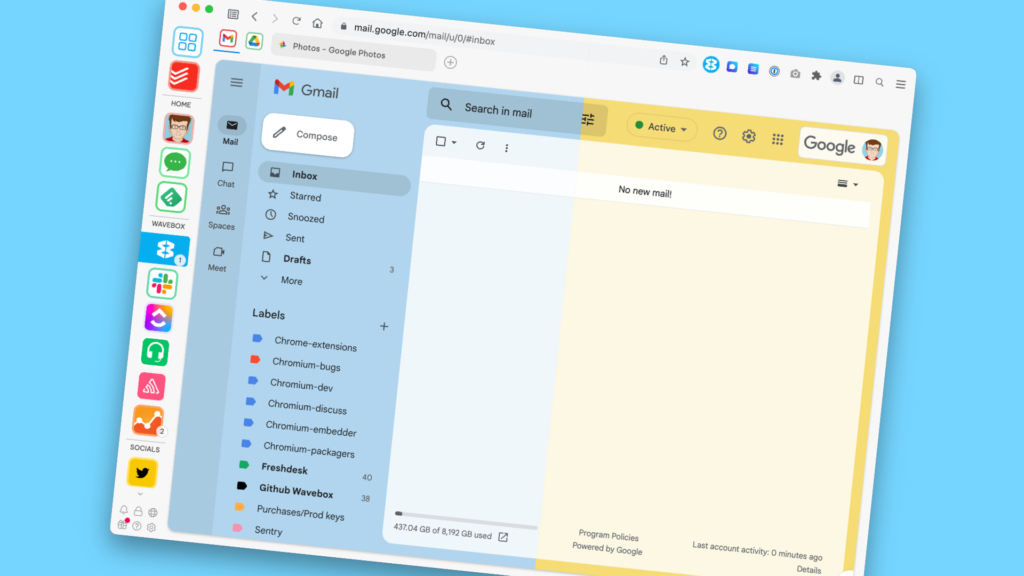
Layouts: Gmail offers different inbox types, such as Default, Important First, Unread First, Starred First, and Priority Inbox. This helps you prioritize emails based on your workflow.
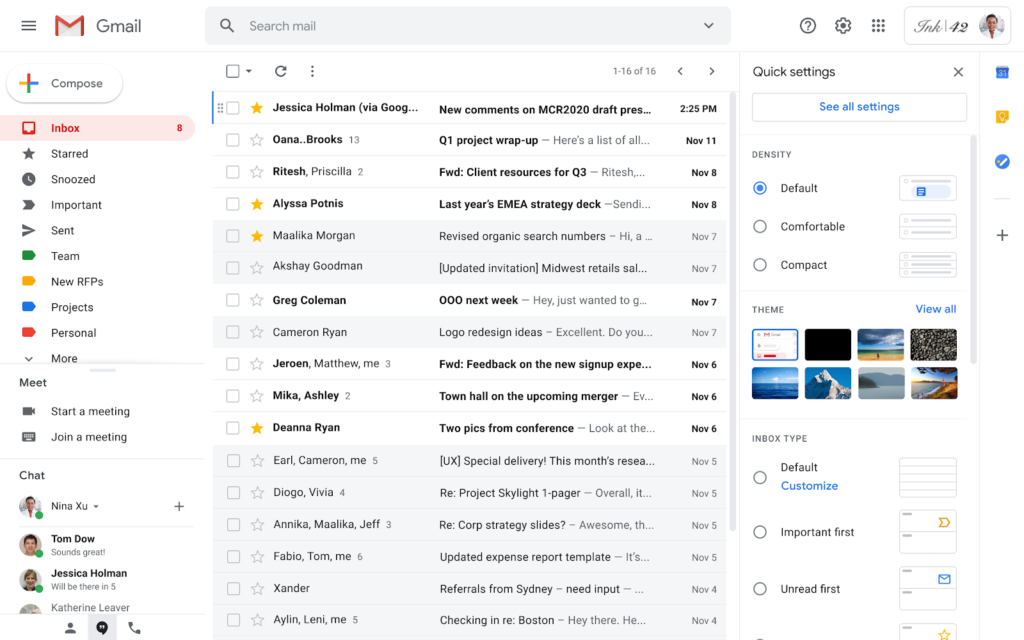
Accessibility Features
Gmail includes several features to enhance accessibility:
Screen Reader Support: Gmail is compatible with screen readers, making it easier for visually impaired users to navigate and manage their emails.

Keyboard Shortcuts: For those who prefer using the keyboard, Gmail provides a range of shortcuts that can speed up your email management.
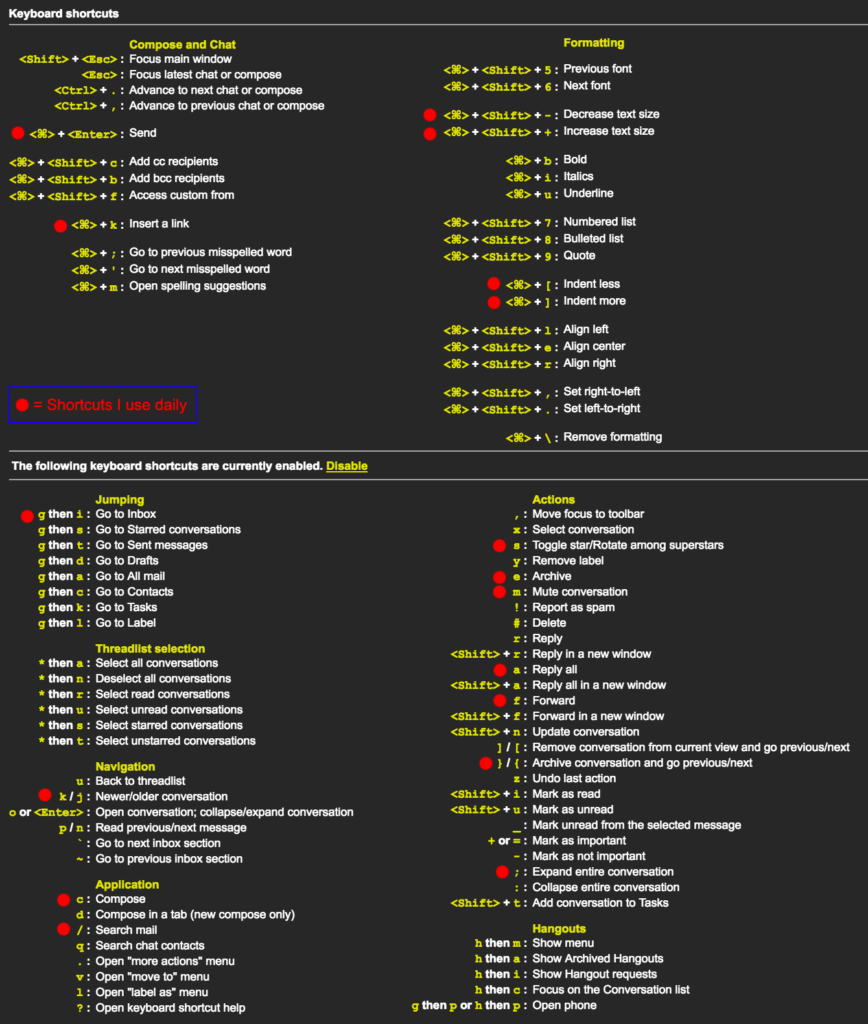
Smart Compose and Smart Reply
Gmail uses AI to improve productivity with features like Smart Compose and Smart Reply:
Smart Compose: This feature suggests phrases as you type, allowing you to write emails faster.
Smart Reply: At the bottom of received emails, Gmail provides quick, contextually relevant replies that you can use with a single click.
Search and Filter Options
Gmail’s powerful search functionality helps you find specific emails quickly:
Search Bar: Located at the top, you can search by keywords, sender, date, and more.Filters: You can create filters to automatically sort incoming emails into labels, mark them as read, or delete them based on criteria you set.
Archiving and Storage Management
To keep your inbox organized, Gmail offers archiving and ample storage options:
Archiving: Instead of deleting emails, you can archive them to keep your inbox tidy. Archived emails are still searchable and can be accessed anytime.
Storage: Gmail provides 15 GB of free storage shared across Google services, with options to purchase more if needed.
Gmail’s user interface and features are designed to enhance your email experience, making it efficient, customizable, and accessible. These tools not only streamline email management but also integrate seamlessly with other Google services, ensuring that you get the most out of your Gmail account.
Email Management Tools
Gmail offers a robust set of email management tools that make it easy for users to organize, search, and manage their emails efficiently. Here, we’ll explore some of the key features that set Gmail apart.
Labels and Folders
Gmail uses a labeling system rather than traditional folders. Labels allow you to categorize emails in multiple ways, offering more flexibility. You can create custom labels, apply multiple labels to a single email, and nest labels within each other. This system helps you keep your inbox organized without duplicating emails.

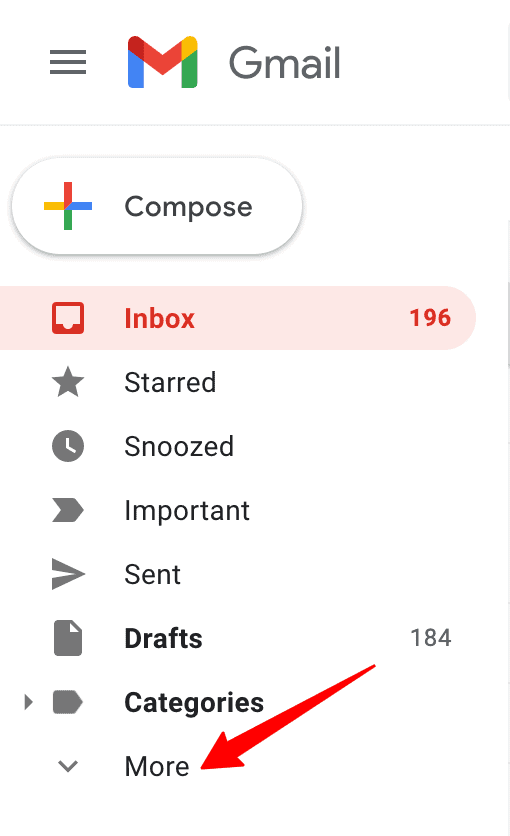
Search and Filter Options
One of Gmail’s standout features is its powerful search functionality. Built on Google’s search technology, Gmail allows you to find emails quickly using keywords, dates, sender information, and even specific phrases. You can use search operators to refine your queries and find exactly what you’re looking for.
Gmail also offers advanced filtering options. You can create filters to automatically sort incoming emails, label them, archive them, mark them as important, or forward them to another address. Filters are highly customizable, helping you manage your inbox with minimal effort.
Archiving and Storage Management
Gmail provides ample storage space with 15 GB available for free, shared across Gmail, Google Drive, and Google Photos. Archiving is a useful feature for keeping your inbox clutter-free without deleting emails. When you archive an email, it moves out of your inbox but remains accessible via search or the “All Mail” label.
Inbox Tabs
Gmail’s inbox tabs automatically sort your emails into categories such as Primary, Social, Promotions, Updates, and Forums. This feature helps you focus on the most important emails first, while less urgent messages are sorted into their respective tabs. You can customize these tabs according to your preferences or turn them off entirely if you prefer a single inbox view.
Importance Markers and Priority Inbox
Gmail uses machine learning to identify and highlight important emails. Importance markers are small yellow arrows that appear next to emails deemed significant. Over time, Gmail learns which emails are important based on your behavior, such as how often you open emails from certain senders.
The Priority Inbox feature goes a step further by dividing your inbox into sections, such as “Important and Unread,” “Starred,” and “Everything Else.” This prioritization helps you focus on critical emails and reduces the time spent sorting through less important messages.
Mobile and Desktop Applications
Gmail App Features (iOS and Android)
The Gmail app is available for both iOS and Android, offering a consistent and user-friendly interface. Key features include:
Real-time Notifications: Instant alerts for new emails.
Swipe Actions: Quickly archive, delete, or snooze emails.
Integrated Search: Fast and accurate email search functionality.
Offline Access: Read and respond to emails without an internet connection.
Multiple Account Support: Manage multiple Gmail and non-Gmail accounts within the app.
Integration with Email Clients (Outlook, Apple Mail)
Gmail integrates smoothly with popular desktop email clients like Outlook and Apple Mail. Key benefits include:
IMAP/POP Support: Sync your Gmail account with any IMAP/POP-supported email client.
Calendar and Contacts Sync: Seamless synchronization of Google Calendar and Contacts.
Gmail Add-ons: Enhance productivity with add-ons directly accessible within the email client.

Privacy and Data Security
Google’s Privacy Policies
Gmail is built with user privacy in mind. Google has comprehensive privacy policies that detail how your data is collected, used, and protected. You can review and manage your privacy settings through the Google Account Privacy Checkup tool, ensuring transparency and control over your personal information.
Data Encryption and Security Measures
Gmail uses industry-standard encryption to protect your data. Emails are encrypted in transit using Transport Layer Security (TLS), ensuring that your messages are secure as they travel between Google’s servers and the recipient’s email provider. Additionally, Google’s data centers are equipped with robust security measures, including physical security, advanced threat detection, and automated defenses against malicious activities.
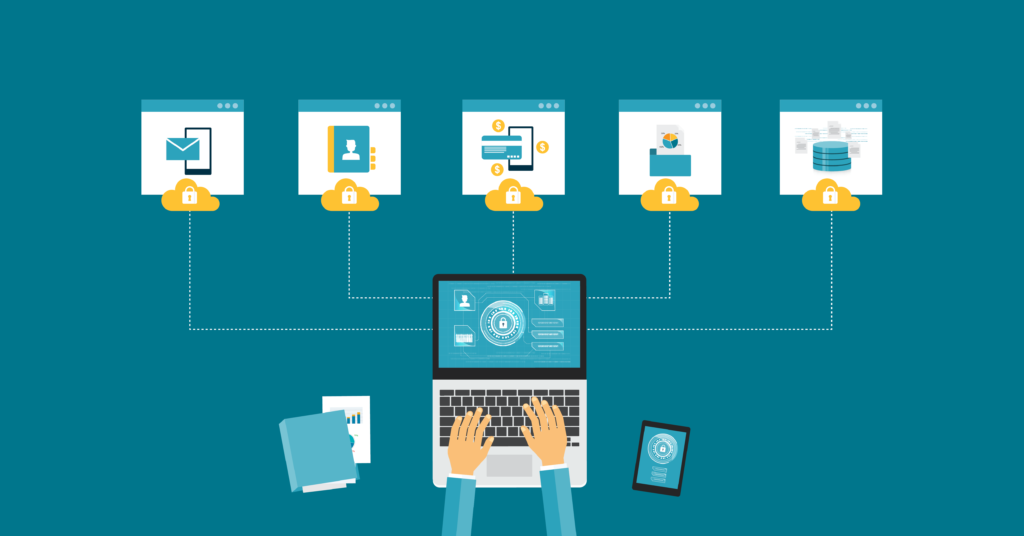
User Control Over Data
Gmail provides various tools to help you manage your data. You can download your data using Google Takeout, delete emails, or set up auto-deletion policies. Gmail also allows you to control ad personalization, ensuring that your data is not used for targeted advertising if you opt out.
Phishing and Spam Protection
Gmail has advanced phishing and spam detection algorithms that protect users from malicious emails. Machine learning models continuously analyze email patterns to identify and block suspicious emails before they reach your inbox. Users can also report phishing attempts, helping improve Gmail’s security for everyone.
Account Recovery and Two-Factor Authentication
To enhance account security, Gmail offers two-factor authentication (2FA), requiring an additional verification step beyond your password. This could be a code sent to your phone or a prompt on your mobile device. For account recovery, Gmail provides options like recovery emails or phone numbers, ensuring you can regain access if you forget your password or get locked out.
General Troubleshooting Steps
Check Internet Connection: Ensure your internet connection is stable.
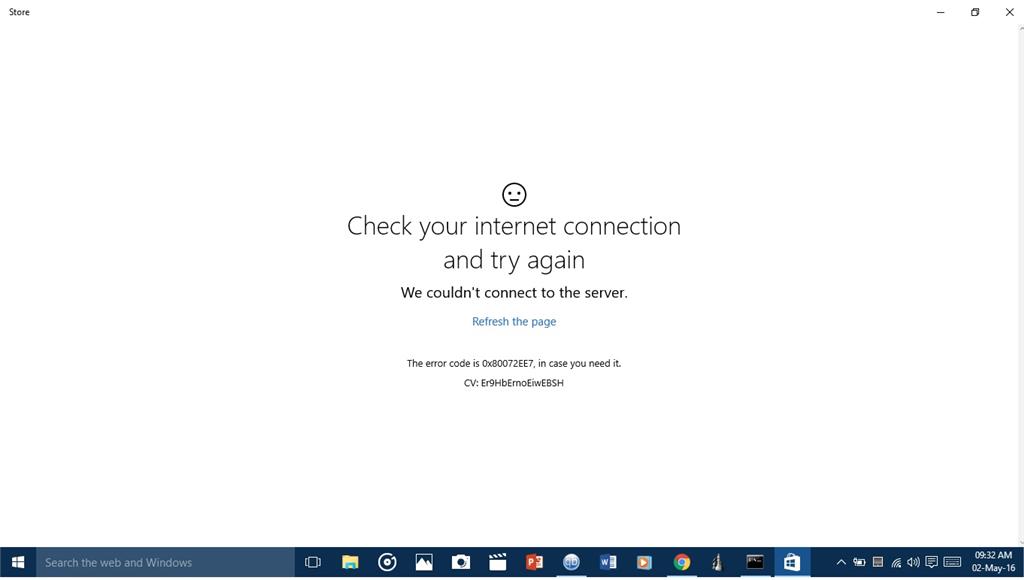
Clear Browser Cache and Cookies: Sometimes cached data can cause issues. Clearing them might help.
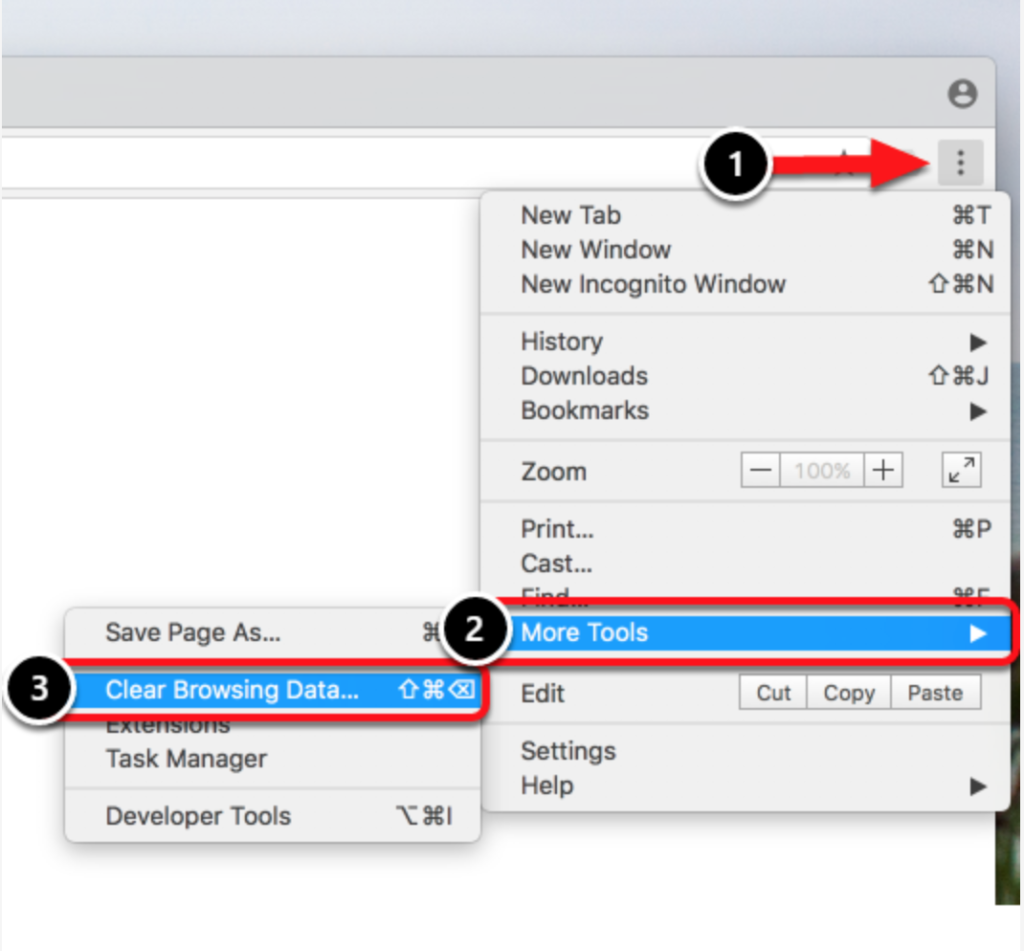
Disable Browser Extensions: Some extensions may interfere with Gmail.
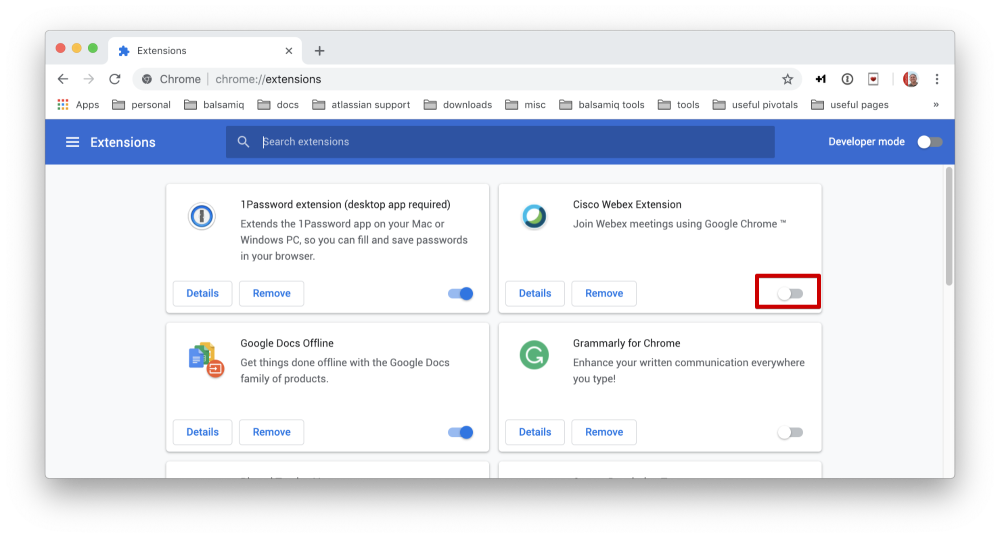
Try a Different Browser: See if the issue persists in a different browser.
Update Browser: Make sure your browser is up-to-date.
Check Gmail Status: Sometimes Gmail services might be down. Check the Google Workspace Status Dashboard for any ongoing issues.
Specific Issues and Solutions
Unable to Sign In: Verify you are entering the correct username and password. Reset your password if you have forgotten it. Check if you have two-factor authentication enabled and ensure you can access the second factor.
Emails Not Loading: Ensure you have a stable internet connection. Clear your browser cache. Try accessing Gmail from a different browser or device.
Emails Going to Spam: Mark the emails as “Not Spam” to train Gmail’s filters. Create filters to ensure important emails bypass the spam folder.
Gmail Not Sending Emails: Check if the recipient’s email address is correct. Ensure your email account is not over the sending limit. Disable any browser extensions that might be interfering.
Gmail App Issues (Mobile): Ensure the app is updated to the latest version. Clear the app cache and data. Reinstall the Gmail app if necessary.
Contacting Support
If these steps do not resolve your issue, you may need to contact Gmail support:
Help Center: Visit the Gmail Help Center for detailed guides and FAQs.
Contact Google Support: Go to Google Support. Select the product (Gmail) and follow the prompts to get in touch with support.
Community Help: Use the Gmail Help Community to ask questions and get answers from other users.
If you have a specific issue or error message, feel free to provide more details so I can assist you further.

Conclusion
Conclusion and Future Outlook
Gmail stands out for its user-friendly interface, strong security features, and seamless integration with Google services, making it a top choice for both personal and professional use.
Future Outlook
Gmail is likely to continue evolving with improvements in AI-driven features like Smart Compose, enhanced security measures, and deeper integrations with Google’s expanding ecosystem, ensuring it remains a leading email service provider.

